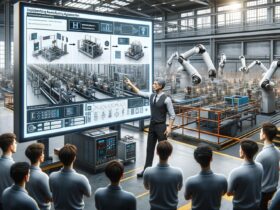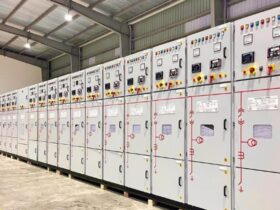Food production, as we know it today, is unsustainable. With growing concerns about the environmental impact of farming, the use of pesticides, and the ethical treatment of animals, it is clear that we need to find new ways to produce food. Two promising solutions are vertical farming and lab-grown meat.
Vertical Farming
Vertical farming involves growing crops in vertically stacked layers using artificial lighting, temperature control, and a nutrient-rich solution. This method of farming has many advantages over traditional farming. For one, it uses less water. According to a study published in PLOS ONE, vertical farms use 70% less water than traditional farms. This is because water is recycled and reused within the system.
Another advantage of vertical farming is that it allows for year-round crop production. Traditional farming is limited by the seasons and weather conditions. Vertical farming, on the other hand, is not affected by external factors, allowing for consistent production throughout the year.
Vertical farming also has a smaller environmental footprint than traditional farming. It requires less land and produces less waste. Additionally, because crops are grown indoors, there is no need for pesticides, herbicides, or other chemicals that are harmful to the environment and human health.
Lab-Grown Meat
Lab-grown meat, also known as cultured meat or cell-based meat, is meat that is produced by growing animal cells in a lab rather than by raising and slaughtering animals. This method of meat production has many advantages over traditional meat production. For one, it is more sustainable. According to a study published in Environmental Science & Technology, lab-grown meat has a significantly lower environmental impact than conventionally produced meat. This is because it requires less land, less water, and produces fewer greenhouse gas emissions.
Lab-grown meat also has the potential to be more ethical. Animal welfare is a growing concern, and lab-grown meat could provide a solution to this problem. By growing meat in a lab, there is no need to raise and slaughter animals, which many people find morally objectionable.
Another advantage of lab-grown meat is that it is more efficient. Conventionally produced meat is an inefficient use of resources. It takes between 6 and 20 pounds of feed to produce 1 pound of beef. With lab-grown meat, the process is much more efficient, requiring fewer resources to produce the same amount of meat.
The Future of Food Production
The future of food production is likely to involve a combination of vertical farming and lab-grown meat. Both methods have the potential to revolutionize the way we produce food, making it more sustainable, ethical, and efficient.
However, there are still challenges to be overcome. Both vertical farming and lab-grown meat are relatively new technologies and are not yet widely adopted. Additionally, there are regulatory hurdles to be addressed before these technologies can become mainstream.
Despite these challenges, the potential benefits of vertical farming and lab-grown meat are too great to ignore. With the world’s population projected to reach 9.7 billion by 2050, we need to find new ways to produce food that are sustainable, ethical, and efficient. Vertical farming and lab-grown meat could be the key to meeting this challenge.
Vertical farming and lab-grown meat are two promising solutions to the problems facing traditional food production. Both methods have the potential to revolutionize the way we produce food, making it more sustainable, ethical, and efficient. While there are still challenges to be overcome, the future of food production looks bright with these innovative technologies on the horizon.









Find Us on Socials